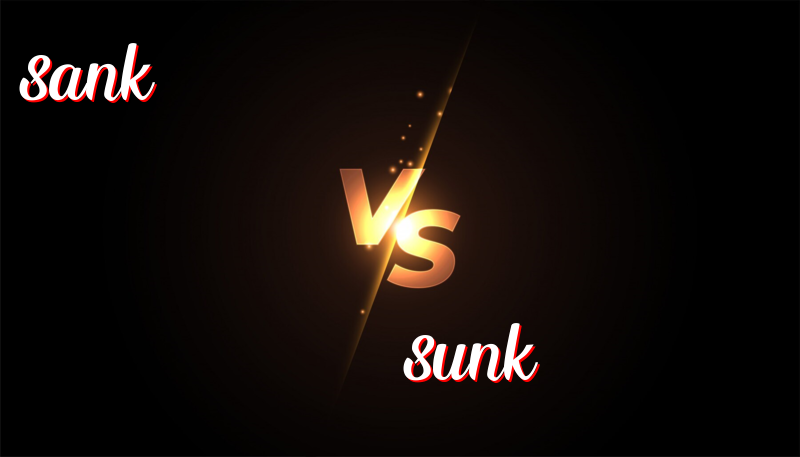英語單詞Sank 與 Sunk的區別
September 10, 2024
解釋”Sank”與”Sunk”之間的差異
“Sank”與”Sunk”是動詞“Sink”的過去式和過去分詞形式。了解這兩個詞語的歷史、用法及差異,可以幫助我們更流暢地使用英語。
歷史
“Sink”這個詞來自古英語“sincan”,,大約在公元1000年前後就開始使用。隨著時間的推移,英語語法中的動詞形式演變出了過去式和過去分詞,並衍生出“sank”和“sunk”這兩個形式。
用法
“Sank”是“sink”的過去式,用於描述過去某個時間點發生的下沉動作。而“Sunk”是“sink”的過去分詞,通常與助動詞“has”、“have”或“had”一起使用,表示動作的完成。
“Sank”的用例
- The ship sank after hitting an iceberg.
這艘船在撞到冰山後沉沒。 - He sank into a deep depression after losing his job.
他在失業後陷入深度抑鬱。 - She quickly sank into the comfortable chair.
她迅速坐到了那把舒適的椅子上。 - The stone sank to the bottom of the lake.
那塊石頭沉到湖底。 - As the sun set, the temperature sank sharply.
隨著太陽下山,溫度驟降。
“Sunk”的用例
- The ship had sunk by the time the rescue team arrived.
救援隊到達時,船已經沉沒了。 - They realized the treasure had sunk to the ocean floor.
他們認識到寶藏已經沉入海底。 - It has sunk into the ground after years of neglect.
多年無人打理後,它已經沉入地面。 - The roots have sunk deep into the soil.
根已經深深地扎進了土壤。 - By morning, the snow had sunk under the weight of the rain.
到早上,積雪在雨水的重壓下已經塌陷。
如何記住這些差異
一個簡單記憶小訣竅是:當想表達某個動作在過去的某個時間點發生時,使用“sank”;當描述某個動作完成並對現在產生影響時,使用“sunk”。例如,你可以記住“sank”像是一個瞬間的動作,而“sunk”則像是這個動作的結果。
總結
總結來說,“sank”是“sink”的過去式,表示發生在過去某個時間點的動作;而“sunk”是過去分詞,通常與助動詞連用,表示動作已經完成並對現在造成影響。掌握這兩個詞語的用法將有助於你更自然地進行英語交流。

Leave a Reply
You must be logged in to post a comment.